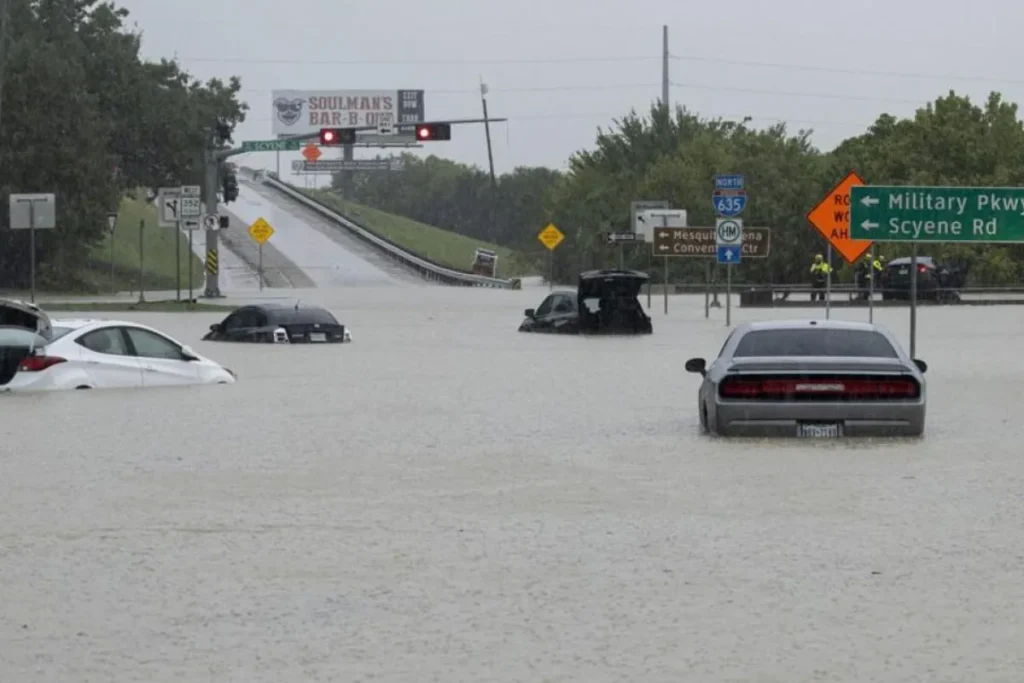As residents of North Texas brace themselves for severe weather conditions, a flash flood warning issued by the National Weather Service (NWS) has heightened concerns and raised awareness about the potential dangers posed by heavy rainfall.
With the warning in effect until Sunday morning, it’s imperative for residents to stay informed and prepared to mitigate the risks associated with flash flooding.
In this comprehensive article, we’ll delve into the details of the flash flood warning, explore the factors contributing to the heightened risk of flooding, and provide valuable tips and resources to help residents stay safe during this hazardous weather event.
Understanding the Flash Flood Warning:
What Does It Mean? A flash flood warning is issued by the National Weather Service when a flash flood is imminent or occurring in a specific area.
Unlike a flood watch, which indicates the possibility of flooding in the near future, a flash flood warning signals that flooding is already happening or is about to happen imminently.
This warning is typically issued when heavy rainfall, rapid snowmelt, or dam/levee failures pose an immediate threat to life and property.
For residents of North Texas, the flash flood warning issued by the NWS until Sunday morning signifies the heightened risk of flash flooding in the region.
With heavy rainfall expected to continue throughout the weekend, it’s crucial for residents to take proactive measures to protect themselves, their families, and their property from the potential dangers posed by flash flooding.
Factors Contributing to Flash Flooding in North Texas Several factors contribute to the increased risk of flash flooding in North Texas, particularly during periods of heavy rainfall:
Topography:
North Texas is characterized by its diverse terrain, including flat plains, rolling hills, and river valleys.
These geographical features can exacerbate the effects of heavy rainfall by promoting rapid runoff and increasing the likelihood of localized flooding in low-lying areas.
Urbanization:
The rapid growth and urbanization of North Texas cities have led to extensive development of impervious surfaces such as roads, parking lots, and buildings.
These surfaces prevent rainwater from infiltrating the soil, resulting in increased runoff and higher volumes of water flowing into storm drains and drainage systems.
Soil Conditions:
The soil composition in North Texas can vary significantly, with some areas experiencing high levels of clay and others characterized by sandy or loamy soils.
In areas with clay-rich soils, water absorption is limited, leading to increased runoff and a higher risk of flash flooding during heavy rainfall events.
Weather Patterns:
North Texas is prone to experiencing a wide range of weather phenomena, including severe thunderstorms, hurricanes, and tropical storms.
These weather patterns can produce intense rainfall rates over short periods, increasing the likelihood of flash flooding in vulnerable areas.
Preparing for Flash Flooding:

Tips and Resources In light of the flash flood warning issued for North Texas, it’s essential for residents to take proactive steps to prepare for the potential impacts of flash flooding.
Here are some valuable tips and resources to help residents stay safe during this hazardous weather event:
Stay Informed:
Monitor local weather forecasts and updates from trusted sources such as the National Weather Service, local news outlets, and emergency management agencies.
Sign up for weather alerts and notifications to receive real-time information about changing weather conditions and emergency situations.
Create an Emergency Plan:
Develop a comprehensive emergency plan for your household that includes evacuation routes, designated meeting points, and contact information for emergency services and family members.
Practice your emergency plan regularly to ensure that everyone knows what to do in the event of a flash flood.
Prepare an Emergency Kit:
Assemble an emergency kit containing essential supplies such as non-perishable food, water, medications, first aid supplies, flashlights, batteries, and important documents.
Keep your emergency kit in a designated location that is easily accessible in case of an evacuation.
Secure Your Property:
Take proactive measures to protect your property from the potential impacts of flash flooding, such as clearing gutters and drainage ditches, securing outdoor furniture and equipment, and elevating valuable items to higher ground.
Consider installing flood barriers or sandbags to prevent water from entering your home or business.
Evacuate if Necessary:
If local authorities issue an evacuation order or if you feel unsafe in your current location, evacuate to higher ground immediately.
Follow evacuation routes provided by emergency officials and avoid driving through flooded roadways or areas of fast-moving water.
Conclusion:
The flash flood warning issued for North Texas until Sunday morning serves as a stark reminder of the potential dangers posed by heavy rainfall and flash flooding.
By staying informed, prepared, and proactive, residents can minimize the risks to themselves, their families, and their property during this hazardous weather event.
Remember to heed the advice of local authorities, monitor weather updates, and take necessary precautions to stay safe and resilient in the face of adversity.